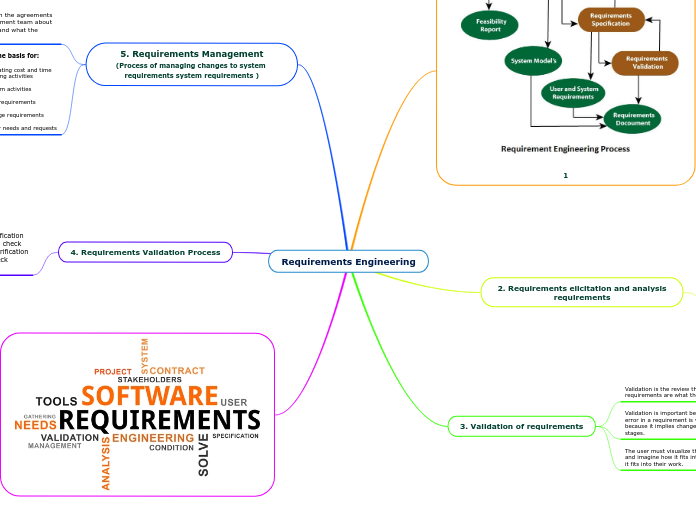Requirements Engineering
Autos = Self
Bios = Life
Graphy=Writing
An autobiography is the author's retelling of their life. This is written in first person and the author is the main character.
4. Requirements Validation Process
1) Validity verification
2) Consistency check
3) Integrity Verification
4) Realism check
5) Verifiability
5. Requirements Management
(Process of managing changes to system requirements system requirements )
Are the basis for:
estimating cost and time
planning activities
perform activities
track requirements
manage requirements
satisfy needs and requests
Requirements evolve because of:
1) Changes in a system's environment
2) The customer's better understanding of their
real needs
Objectives:
Establish and maintain a document with the agreements between the customer and the development team about the customer's needs of the customer and what the system will do
3. Validation of requirements
The user must visualize the system in
and imagine how it fits into his or her
it fits into their work.
Validation is important because an error in a
error in a requirement is very costly because it
because it implies changes in all the other
stages.
Validation is the review that the requirements
requirements are what the user wants.
2. Requirements elicitation and analysis
requirements
Stage in which the technical software development staff will work on technical development staff will work on:
Activities:
1) Understanding the application domain.
2) Collection of requirements.
3) Ranking.
4) Conflict resolution.
5) Prioritization.
6) Verification of requirements.
To:
1) Establish requirements
With Stakeholders:
1) Customers and end users of the system,
2) Engineers who develop or maintain other systems
other systems,
3) Business administrators,
4) System domain experts,
5) Employee representatives, etc.
1
Add your personal information.

